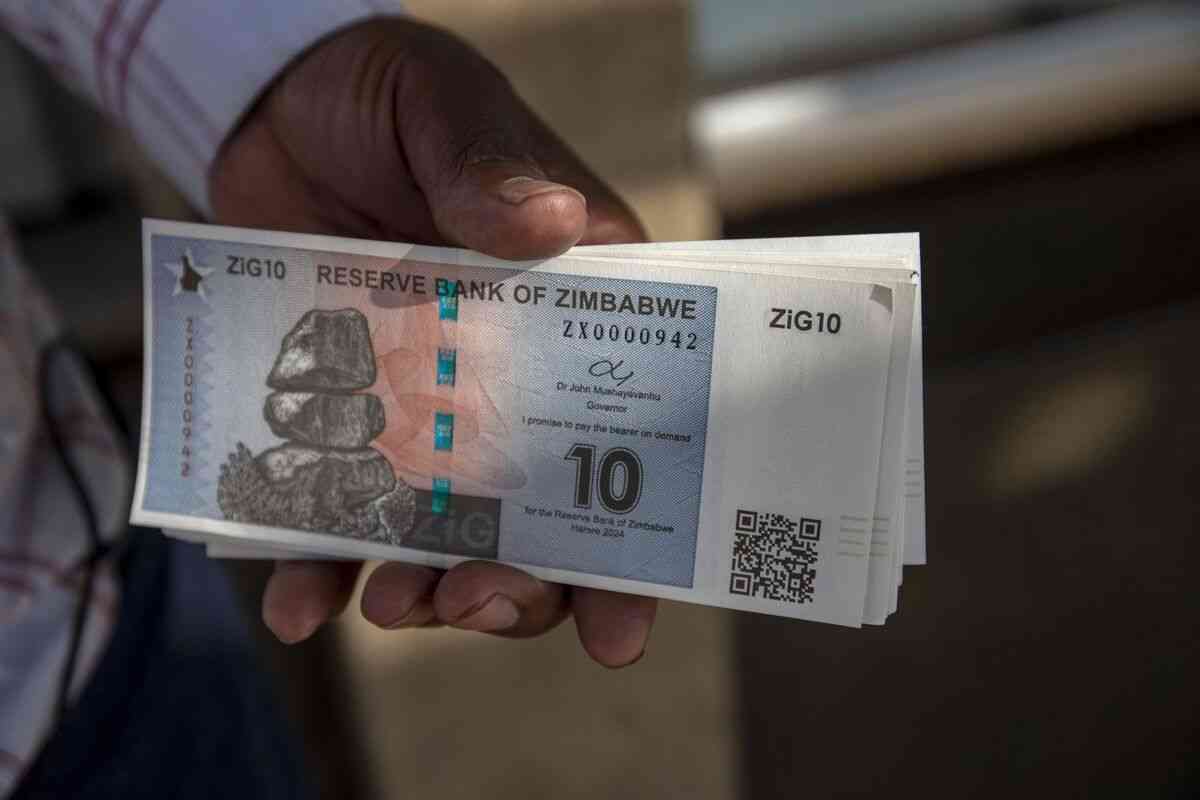
FOR the first time in over a year, ZIMSTAT published inflation data for the local currency, along with the US$ and the blended inflation. This follows the introduction of a new local currency, ZiG, in April of 2024, and therefore, this is the first inflation data for the ZiG. Additionally, for the first time in over a decade, Zimbabwe’s local currency recorded a deflation.
However, this came in-line with a worsening BOP, inducing an imminent and imperative assessment of causation or correlation.
Zimbabwe saw the ushering in of the ZiG on the 5th of April, 2024, replacing the ZWL.
Consequently, inflation statistics were rebased to 100, and the published data only shows month-on-month movement as the annual movement is expected to be relevant in April 2025.
From a rebased level of 100, the ZiG Consumer Price Index (CPI) fell to 97.58 in May 2024.
This reflects a month-on-month inflation rate of -2.4%, which typically indicates deflation. Meanwhile, the US$ CPI at 106.85 in May was up 0.1% against 106.76 in April.
On a year-to-date basis, the US$ CPI stood at 3.5%, from an index of 103.2 in May 2023.
Furthermore, the blended CPI (a combination of the ZiG and the US$ inflation), also referred to as the weighted CPI, was down -0.6% from a rebased level of 100 at inception of ZiG, to 99.42 in May. Again, the year-on-year computation for this CPI will only be plausible in May 2025.
- Zanu PF stretching the truth on prices
- Is a currency board the solution?
- Tough times beckon as prices soar
- Hyperinflation leaves firms in reporting fix
Keep Reading
On the other hand, total trade deficit worsened off from US$186.3 million in March to US$256.9 million in April, according to the latest official data. This was induced by a continued decline in exports against a sharply growing import level. Therefore, as Zimbabwe celebrates a deflation, trade balances are alarmingly spiraling in the negative direction.
However, these two tend to have an inverse relationship in the particular case of Zimbabwe.
It is important to understand that the government suspended the publishing of local currency inflation over a year ago on fears of heightened inflation trends emanating from panic and speculation based on the data. The government also intended to mitigate the extend of currency failure under the ZWL.
Therefore, the publishing of ZiG inflation will equally likely sustain for as long as the exchange rate stability.
Since inception of the ZiG to end of May, the exchange rate moved 1.9% in favour of the ZiG against the US$, while in May alone the ZiG appreciated by 0.8% against the US$.
The exchange rate is based on gold price movements on the global market, which does not reflect economic realities of demand and supply within the confines of Zimbabwe. Additionally, the ZiG was introduced at an exchange rate stronger than all currencies in the region. These factors indicate a possible direction to be projected on exchange rate, inflation and trade balances.
The fixation of the exchange rate to gold prices translate to a continued appreciation of the local unit against the US$ on interbank market, disregarding demand and supply of ZiG for transacting locally.
Meanwhile, inflation trends have always aligned with exchange rate movements since introduction of the ZWL to-date.
For example, the increasing US$ inflation is attributed to a controlled official rate against a free-floating parallel rate.
In a bid to align with regulated application of exchange rate, formal traders increase US$ prices of goods, which off-sets exchange premium between prevailing exchange rates.
Therefore, a sustained stability of the official exchange rate means a sustained deflation or a trend of inflation and disinflation of the ZiG, while the US$ inflation continues to rise.
On the other hand, the sustained rate stability at such stronger levels means cheaper imports from regional players while exports become more expensive by the day.
This means, we are likely to witness continued ZiG deflation, rising US$ inflation and worsening trade balances for as long as the exchange rate remains fixed.
- Duma is a financial analyst and accountant at Equity Axis, a leading media and financial research firm in Zimbabwe. — twdumah@gmail.com or tinashed@equityaxis.com, Twitter: TWDuma_






